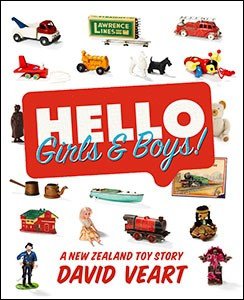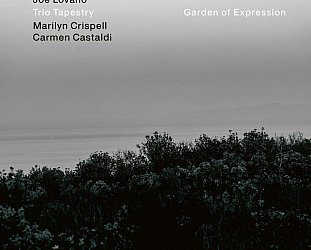Graham Reid | | 2 min read

This Wednesday at Art+Object in Auckland there is an auction of vintage toys. These aren't Star Trek collectibles still in their plastic wrappers, but much loved and played-with toys from the Twenties to the Sixties.
So among them will be famous brands like New Zealand's own Fun Ho! alongside Dinky from Britain and toys from Germany . . . and of course, “Boy oh boy! A Lincoln toy!”
Just as when you go to the Museum of Transport and Technology (MOTAT) or museums with exhibits of popular culture artifacts (“My mum had one of those!”), toys can be a prompt to memory.
As childhood falls away and we put aside our toys, we disconnect from a formative part of ourselves . . . and our toys can tell us much about ourselves as individuals and as a culture.
In this excellent, readable and well illustrated 310-page hardback, the New Zealand cultural historian and archeologist David Veart explores the history of toys in New Zealand, right back to the days of the first waka arriving on these shores.
“Kites, te manu tukutuku, are the perfect place to start exploring the toys of Aotearoa New Zealand,” he writes. “Kite makers know how to harness the wind, and in the beginning Aotearoa was a place that only people who understood the wind could reach.”
And right there in that astute observation – so obvious when you think about it – you know you are in the hands of someone who has thought about this subject and can speak in plain language.
He explores the earliest Maori “toys” (tops, hand games, stilts and so on used by adults a much as children) then moves on to the period of colonisation by Europeans.
Veart interpolates his own reflections and observations through out (being on a plane to New Zealand where the three girls of British migrant family are clutching their dolls for comfort) yet scoures the manifests of 19th century vessels to discover what toys – if any – were being brought over.
He includes telling diversions into the character of “the wild children” in New Zealand in the 1890s (“a blight of juvenile vice”) and the shanghai-armed tribes who fired at birds, churches, windows, other kids and the glass insulators on telegraph poles.
You have to admire their accuracy however, in 1936 the Evening Post reported 7000 insulators around Wellington had been smashed by shanghai-toting children.
There was a call to control the sale of elastic to children, just as there are limits today on selling aerosol cans to aspiring graffiti writers and artists.
Veart moves at a sprightly pace, is inclusive of Maori and Pakeha toys alike, looks at dolls and speculates on why so many were broken (the brunt of their owners' frustrations, possibly at the social controls enforced on little girls) and then moves into the more modern era.
Before World War I most of the toys imported into New Zealand came from Germany; Meccano Clubs in New Zealand were huge (Auckland's club with over 1000 members was the largest in the world in 1927); the culture of model trains; the elaborate dolls' houses imported in the Thirties (some of beautifully modernist, almost Bauhaus in design) and so on . . .
For older readers – at whom this lovely book is doubtless aimed – there are checklist of names and words which will conjure up memories: homemade trolleys, Tri-ang, the buzzy bee (nice insert which clears up a few myths); Hornsby; Wendy houses; hula hoops and Davy Crockett hats; Modelair kits; Tonka toys; skateboards . . .
Aside from the memory prompts these offer, Veart contextualises them in New Zealand's social history.
He joins the dots between play and purpose, illustrates how toys reflected changing culture and interests, and how they were used overtly or subtly for socialisation if not social control.
This is not just a wonderful book guaranteed to bring smiles of recognition (“My sister had one of those!”) but reminds you that society is shaped as much by the small and seemingly inconsequential things as it is by the big-time decision makers and captains of industry . . . all of whom once played with toys just like all the rest of us.
Get the kids making slingshots this Christmas.
Hello Girls and Boys! A New Zealand Toy Story by David Veart (AUP $65)
To read an extract from Veart's introduction at Elsewhere go here.





post a comment